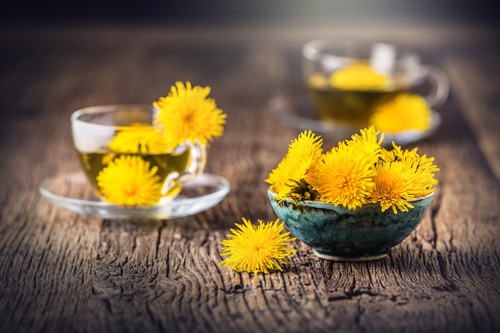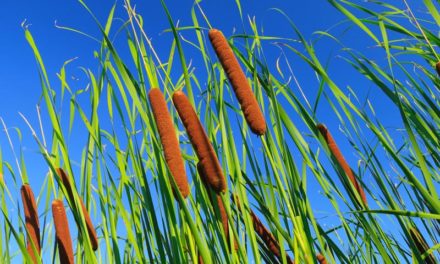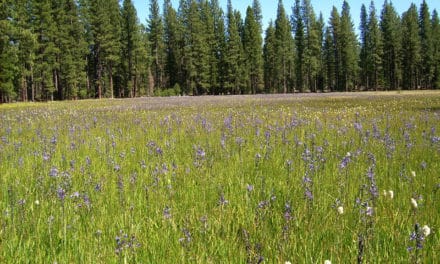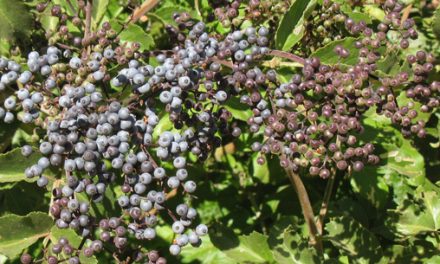Story and photos by Jim Moore
Dandelions: the bane of the perfect lawn grower; the cha-ching of the cash register of herbicide companies; fresh medicinal herbs for the herbalists; another source of misery for allergen sufferers; and the culinary delight of trendy connoisseurs. Such is the lowly dandelion to so many people! In this article I will discuss the dandelion as favored by the last group of folks.
Long ago I gave up the mechanical battle to rid my yard of each and every dandelion plant. For my health, and my kids health, and now my grandkids health, and for the health of the environment, I have chosen not to use plant poisons to kill weeds in my yard. But it never occurred to me that these weeds called dandelions were actually a very nutritious plant that is grown commercially in this and other countries.
All parts of the dandelion plant are edible. The roots are dried, roasted and ground to make a coffee-like beverage; leaves are dried and used to make tea. Leaves are used in salads, soups, omelets, cooked like spinach, and can be added to many recipes. The young flowers are also used to make dandelion wine.
Going online I found for sale, dandelion coffee blends, dandelion tea blends, and various dandelion wines. Those salad green mixes that can now be found in stores often contain fresh dandelion leaves; and trendy restaurants are now using fresh dandelion greens in their menus.
I simply go out into my yard and harvest leaves from those semi-wild dandelions that I have transplanted into large pots. When carefully cultivated in these large pots in my garden the dandelion plants grow fairly large with an abundance of upright leaves. I have noticed that potted dandelions grown in the shade of one of my apple trees produce leaves that grow larger, and do not get bitter as soon as those plants grown in full sunshine. Since the dandelion is a hardy perennial I just let them grow year after year for multiple harvests.
Dandelions are especially high in the following nutrients: vitamin A (carotenes), most of the B vitamins, vitamin C, and the minerals magnesium, calcium, and potassium. Other nutrients include vitamins E and K, iron, zinc, protein, beneficial phytonutrients, probiotics, antioxidants, and dietary fiber.
While researching the benefits of dandelion, I came across more than a few links to the so called Mediterranean Diet, and learned that the dandelion plant has been grown for centuries in the vegetable gardens of Southern European nations, especially Italy and Greece. Dandelion usage is also recorded in the ancient literature of many Asian nations.
Many Dandelion recipes can be found on the internet, and often include comments and suggestions from folks who have tried the recipes. I recommend adding thoroughly cleaned leaves, that have been diced up but not too small, to almost any creamy or broth based soup. It adds extra color, flavor, and most importantly, nutrition.
Safe to harvest wild dandelions can be found in many places. Just avoid harvesting dandelions grown in parks, and lawns in general, because you never know where the doggies have gone.
The name Dandelion means ‘Lion’s-tooth’ and is so named because of the tooth like margins of the leaves. The scientific name is Taraxacum officinale.
To prevent unwanted seed dispersal I usually pick and store away the dandelion flower heads in a paper bag, which I later burn.
My final advice to those folks, who are forever trying to rid their yard of dandelions is this: if you cannot beat them, then just start eating them! Also, every now and then pick a dandelion seed head and just for fun blow those little seeds into the wind.
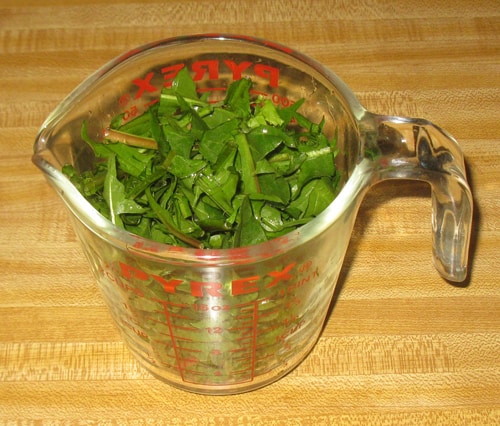
DANDELION SOUP
FIRST INGREDIENTS
2 tablespoon canola oil
1 cup diced baby carrots
1 cup sliced celery
1/2 cup onion diced
1 teaspoon basil leaf
1 teaspoon garlic powder
1/2 cup turkey burger
LAST INGREDIENTS
2 cups washed and chopped dandelion leaves
1 cup precooked winter squash cut into small strips
1 1/2 cups pre-cooked quinoa noodles
1/2 cup frozen green peas
1/3 teaspoon black pepper
1/2 teaspoon sea salt
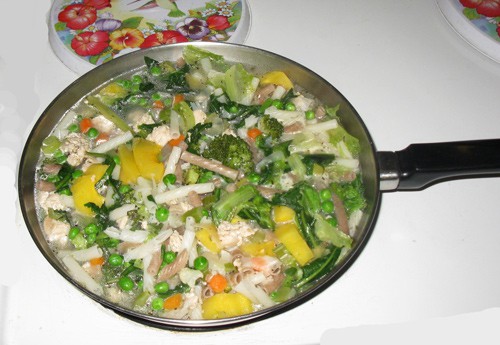
Step One:
Sauté in soup pot, or skillet, the FIRST ingredients until turkey burger is fully cooked. Then add enough water to cover all the FIRST ingredients, and simmer until vegetables are tender.

Step Two:
Add all the LAST Ingredients and simmer for about another five minutes. Add more salt to taste if desired. The Dandelion soup is now ready to serve!
Additional Notes:
This recipe was based upon what I call Use-it-up Vegetable Soup; I just use whatever compatible ingredients that I can find, especially stuff that needs to be used up, such as that half of onion, or bit of baby carrots that has been sitting in the fridge for a while, or the rest of those quinoa noodles from last night’s dinner.
Any ingredient, except the dandelion leaves of course, can be left out; and other ingredients such as chickpeas, black beans, wild rice, potatoes, corn, okra, chopped cabbage, etc., can be added, along with any other spices that you may like. I like making vegetable soups with an appealing variety of color. This recipe turned out quite tasty.

